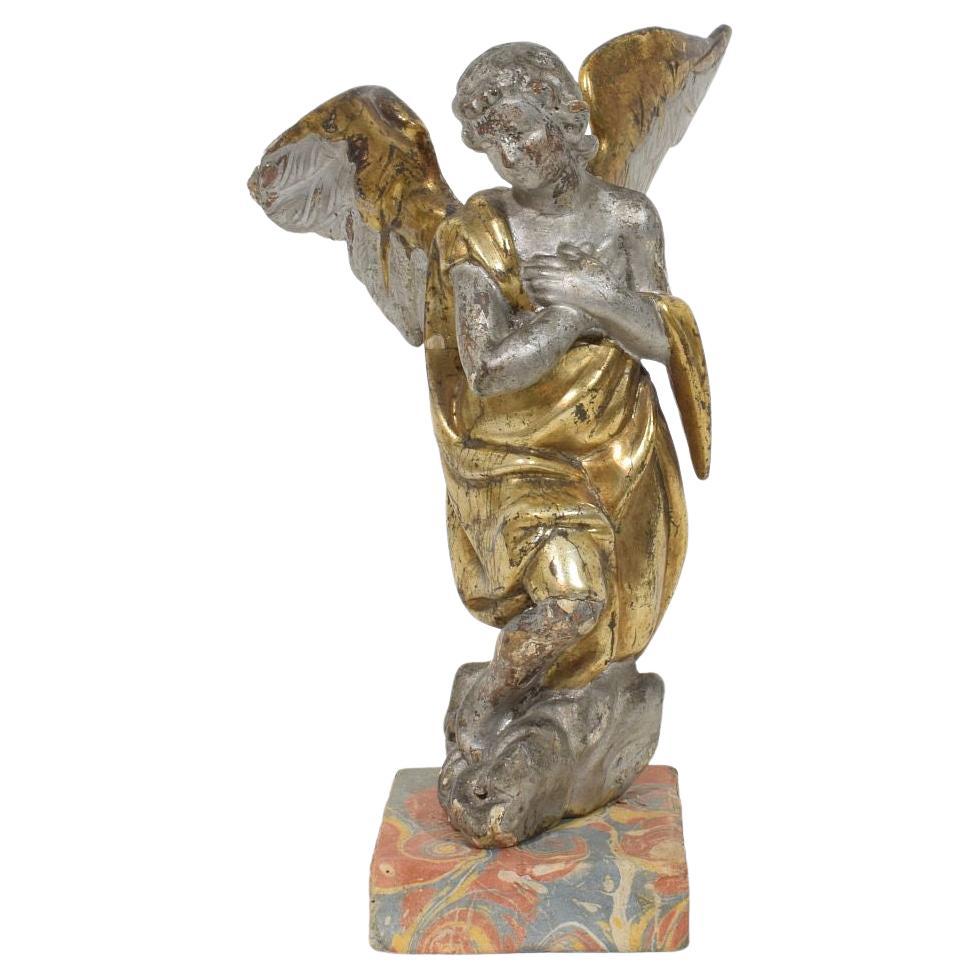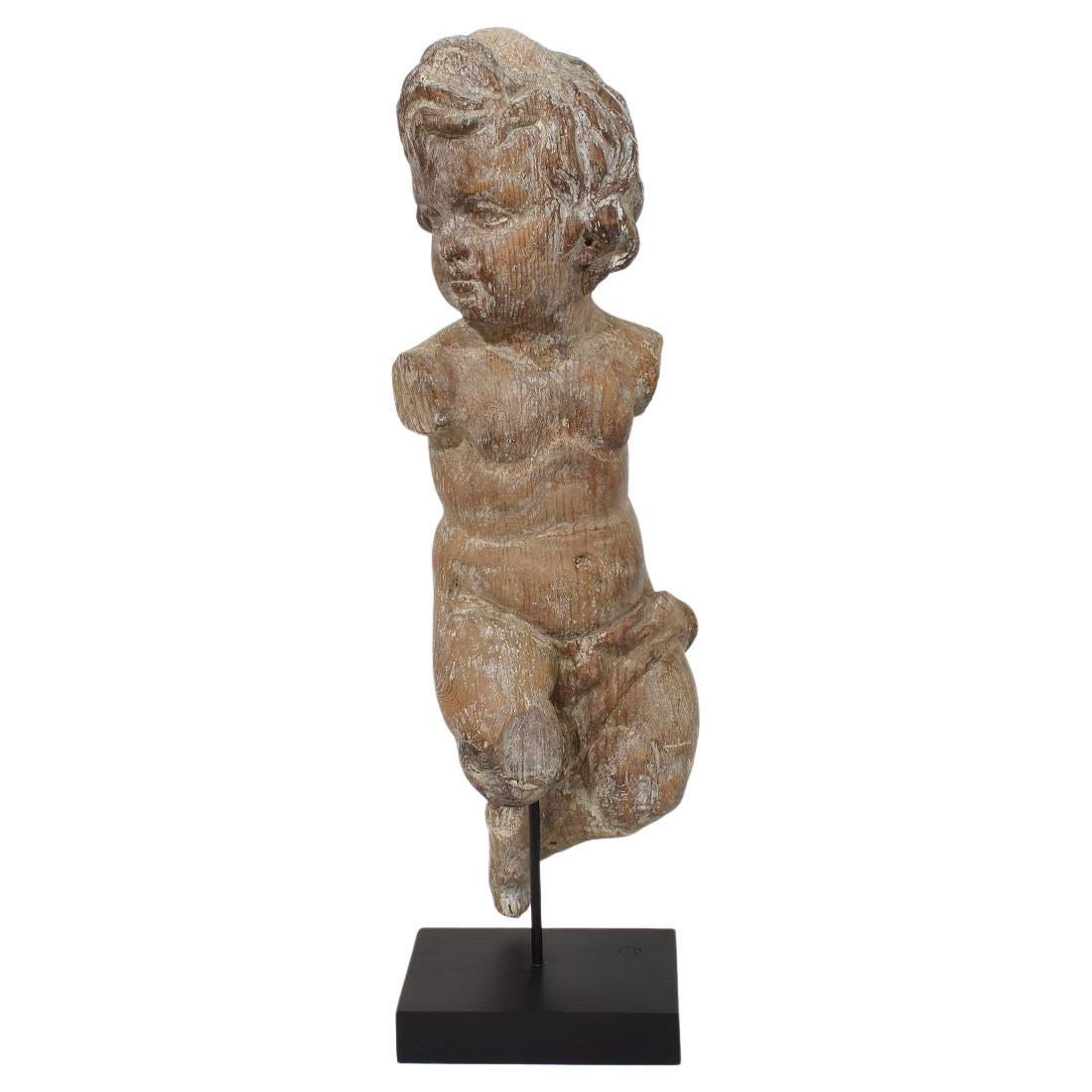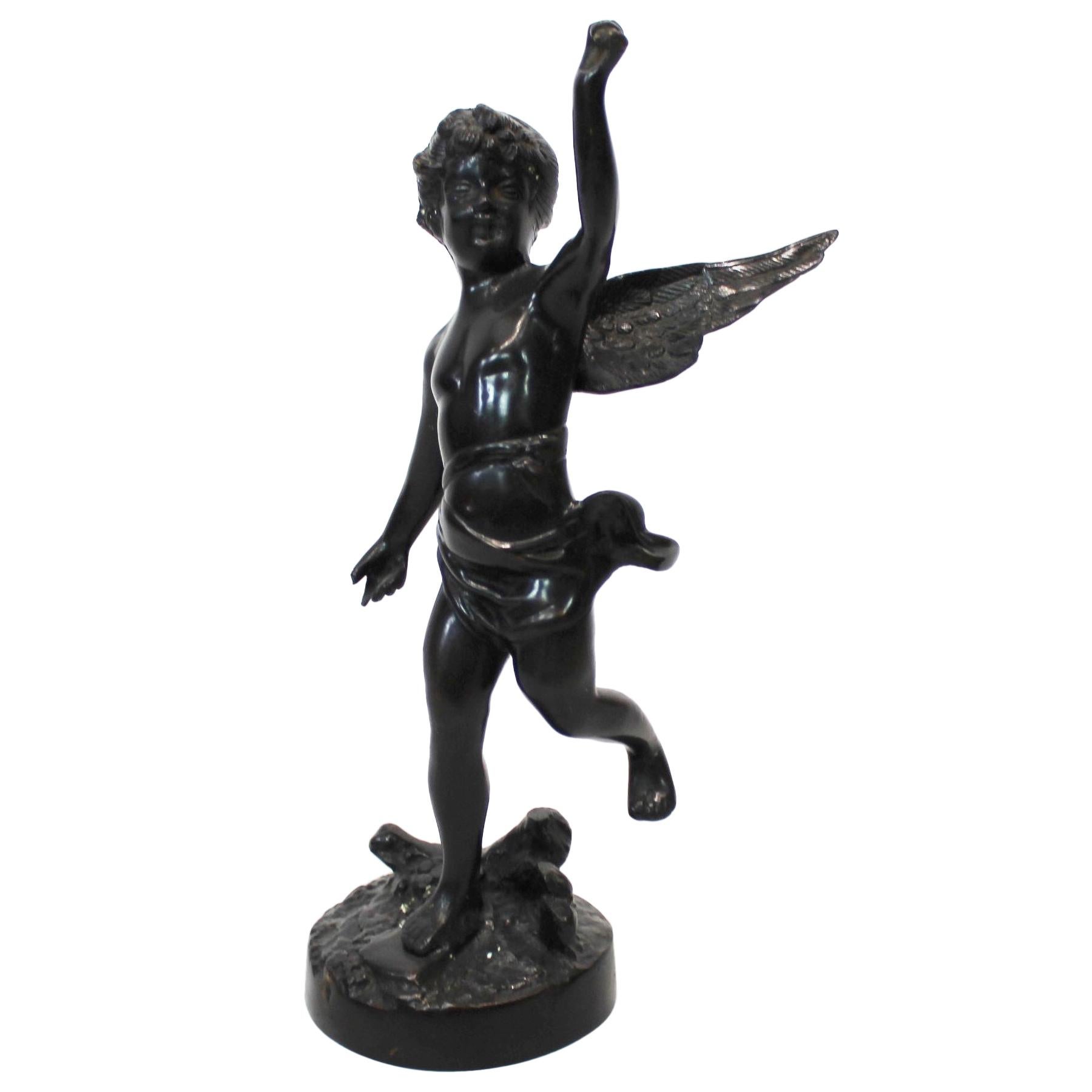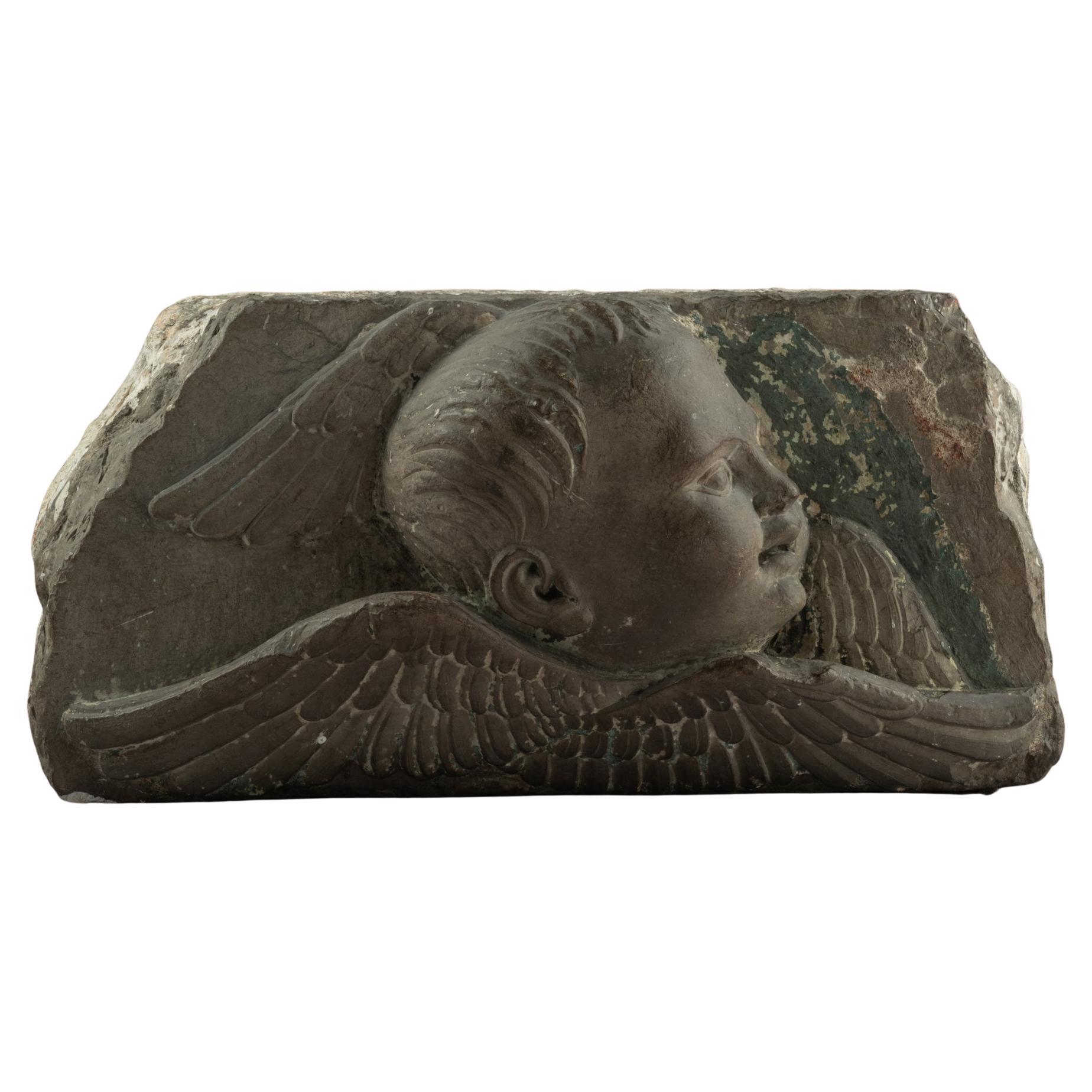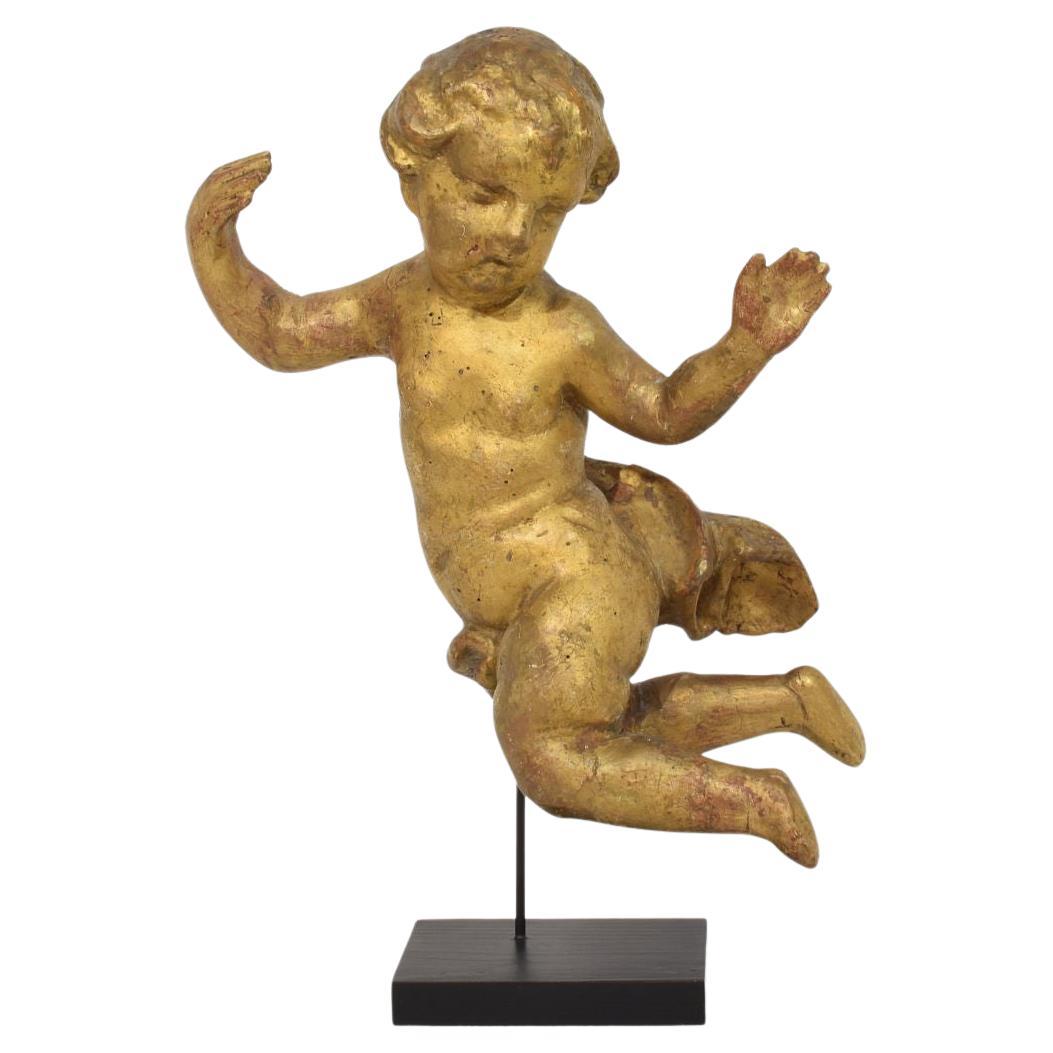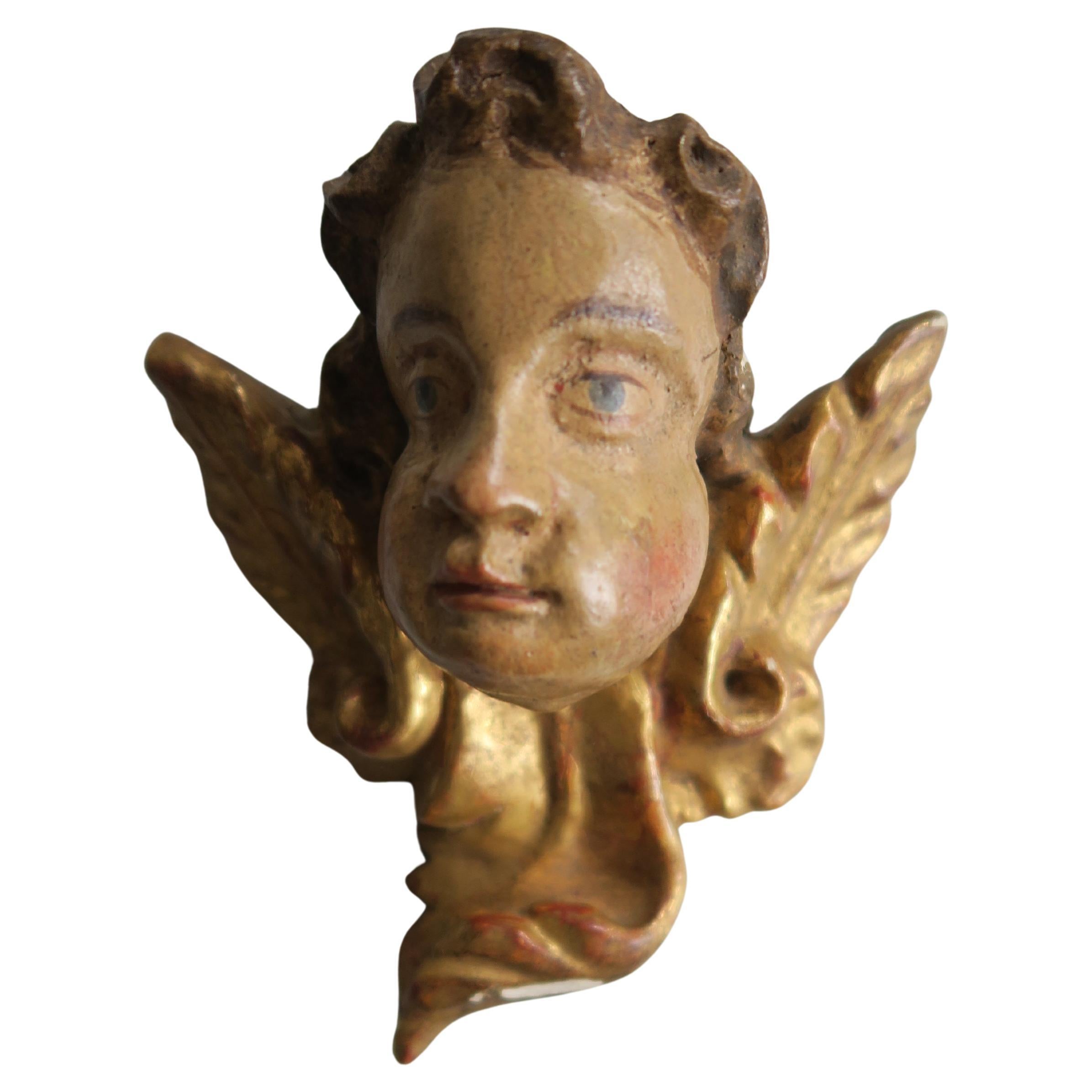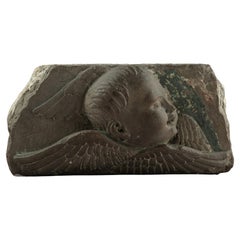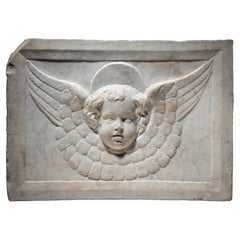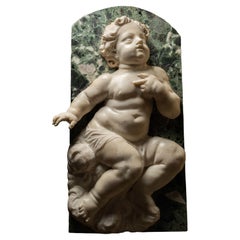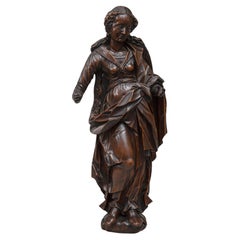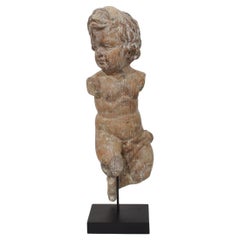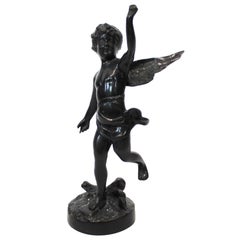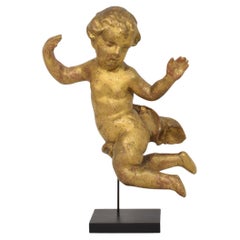Items Similar to Renaissance Harpy - Italy, 16th century
Want more images or videos?
Request additional images or videos from the seller
1 of 8
Renaissance Harpy - Italy, 16th century
$5,026.85
£3,708.07
€4,200
CA$6,964.95
A$7,562.58
CHF 4,004.94
MX$92,695.57
NOK 49,562.70
SEK 46,834.13
DKK 31,974.02
About the Item
Renaissance Harpy
bronze
Italy, 16th century
15 x 12 x 5,5 cm
This expressive bronze figure represents a harpy, a mythological creature with the body of a bird and the head and torso of a woman. Characteristic of the Renaissance fascination with classical antiquity and fantastical hybrids, this harpy serves both a decorative and symbolic function. This harpy might have served as an apotropaic symbol—warding off evil—or simply as a luxurious ornament reflecting the owner's classical erudition and taste.
The harpy is depicted in dynamic motion, with wings outstretched dramatically in an upward sweep that creates an impression of airborne suspension. The finely detailed wings show individual feather articulation, evoking the grace and power of flight. The figure’s upper body is distinctly human and female, with visible anatomical features including a full bust and softly modeled shoulders. Her head is adorned with a crested helmet or headdress, possibly alluding to martial or classical virtues, and turned slightly to her right, enhancing the sense of movement and vitality.
The lower half of the harpy’s body transitions into flowing, leaf-like forms, suggestive of plumage or stylized foliage. These elements, curling and undulating downward, not only anchor the figure but also emphasize its ornamental nature. A circular attachment or mount at the rear suggests it was affixed to another object—possibly a piece of furniture, a vessel, or architectural structure such as a door or chest.
The patina, a dark brown with traces of green oxidation, reveals the age and historical use of the object. Despite minor surface wear and corrosion typical of aged bronze, the piece retains a remarkable sharpness in its details. The style and craftsmanship are consistent with Italian bronze work of the 16th century, where such fantastical figures were integrated into interior décor and domestic furnishings.
In Renaissance decorative arts, mythological creatures like harpies were popular motifs, often symbolizing the boundary between the natural and supernatural. This bronze harpy represents a sculptural translation of the grotesques so admired in Renaissance painting—fantastical hybrids that embody the period’s fascination with the marvelous and the antique, reimagined here in three-dimensional decorative form.
- Dimensions:Height: 5.91 in (15 cm)Width: 4.73 in (12 cm)Depth: 2.17 in (5.5 cm)
- Style:Renaissance (Of the Period)
- Materials and Techniques:Bronze,Cast
- Place of Origin:
- Period:
- Date of Manufacture:16th century
- Condition:Wear consistent with age and use.
- Seller Location:Bruxelles, BE
- Reference Number:1stDibs: LU6666245715952
About the Seller
5.0
Vetted Professional Seller
Every seller passes strict standards for authenticity and reliability
1stDibs seller since 2022
15 sales on 1stDibs
Typical response time: <1 hour
- ShippingRetrieving quote...Shipping from: Bruxelles, Belgium
- Return Policy
Authenticity Guarantee
In the unlikely event there’s an issue with an item’s authenticity, contact us within 1 year for a full refund. DetailsMoney-Back Guarantee
If your item is not as described, is damaged in transit, or does not arrive, contact us within 7 days for a full refund. Details24-Hour Cancellation
You have a 24-hour grace period in which to reconsider your purchase, with no questions asked.Vetted Professional Sellers
Our world-class sellers must adhere to strict standards for service and quality, maintaining the integrity of our listings.Price-Match Guarantee
If you find that a seller listed the same item for a lower price elsewhere, we’ll match it.Trusted Global Delivery
Our best-in-class carrier network provides specialized shipping options worldwide, including custom delivery.More From This Seller
View AllRenaissance Winged Cherub Relief
- Florence, 15th century
Located in Bruxelles, BE
Renaissance Winged Cherub Relief
Florence, Second Half of the 15th Century
Stone with traces of polychromy
Provenance: Important private collection, Northern Italy
This exceptional...
Category
Antique 15th Century and Earlier Italian Renaissance Figurative Sculptures
Materials
Stone
Cercle of Jacopo della Pila - Marble relief depicting a winged Cherub
Located in Bruxelles, BE
Cercle of Jacopo della Pila (Lombard, in Naples 1471-1502)
Marble relief depicting a winged Cherub
Naples, second half of15th century
40 x 57 x 12 cm
Exquisitely carved, this relief portrays a winged cherub with cascading hair and delicate features. The cherub's plump, smooth countenance, rounded cheeks, outlined lips, and finely drawn nose emanate a sense of tenderness. The quadrangular module, is adorned with a carved frame. The relief ascends gradually, transitioning from the low relief of the wings to the high relief of the head.
The rectangular frame and the subtly curved form of the artwork suggest that the relief likely adorned the upper part of an arch or a vaulted chapel. The type is that of the perspective room with a coffered ceiling decorated with figures of winged cherubs, which is found in various Neapolitan chapels of the 15th century. Coffered ceilings attest to the recovery of antiquity and the search for luxury in Renaissance architecture, first in Florence, then in Rome and Naples. The majority of the numerous family chapels and tombs built during the late fifteenth century in south of Italy employ the new formal vocabulary of the Florentine Renaissance in a self-confident manner that permitted a broad spectrum of variations.
The escalating admiration for the classical world, coupled with the development of perspective, significantly contributed to the Renaissance endorsement of coffered ceilings. This artistic and constructive device drew inspiration from the intricate marble patterns observed in historical landmarks such as the Arch of Titus, the Temple of Vesta in Tivoli, the Pantheon, and the Basilica of Maxentius. A distilled product of both mathematical and artistic cultures, deeply scrutinizing the ancient world, the coffered ceiling plays a vital role in the perspective construction of space with its regular and directional geometry. The motif of the coffered ceiling decorated with cherubs in relief was introduced in Naples by Francesco Laurana in the plastic decoration of the Arch of Castelnuovo. Laurana's impact on the art scene in the south of Italy was profound. The introduction of the winged cherub into the region's artistic vocabulary bridged the gap between the classical and the contemporary, creating a synthesis that resonated with both aesthetic and spiritual sensibilities. His influence extended beyond the immediate visual appeal, shaping the cultural identity of the Renaissance in southern Italy. Although the plastic decoration of the Arch of Castelnuovo cannot certainly be ascribed to a mature Renaissance style, it was precisely on this occasion that the sculptors who worked there could get to know and export throughout the Italian peninsula that type of "Florentine classicism" which, even in the 15th century Naples, was conditioned by the Burgundian culture imported into the Kingdom by Alfonso of Aragon himself, with artists called from Spain and Northern Europe. The coffered ceiling, with its geometric patterns and Laurana's winged cherubs nestled within, became a symbol of refinement and cultural sophistication. The relief sculptures, carefully integrated into the overall design, transformed the ceiling into a celestial realm, inviting viewers to contemplate the divine while immersed in the grandeur of the Renaissance space.
Similar winged cherubs appears also in the Naples cathedral. Within the renowned Succorpo Chapel, a mesmerizing marble coffered ceiling adorned with cherubs epitomizes the splendor of the Neapolitan Renaissance. The interplay of light and shadow on the textured surface of the marble coffered ceiling introduces an ethereal dimension, providing an immersive visual experience for observers. The geometric precision and the repeated patterns, reminiscent of classical motifs, establish a sense of harmony and balance that has become the hallmark of the Neapolitan interpretation of Florentine Renaissance aesthetics.
Although probably intended to be admired from a distance, this cherub is intricately detailed and exquisitely rendered: the face and hair are elegantly outlined and the feathers are textured through juxtaposed lines. The marble, both figurative and decorative, adheres to the principles of balance and restrained ornamentation typical of the « Florentine Classicism ». Harmonious shapes and gracefully orchestrated curves , rooted in the classical repertoire, converge to evoke a sense of ethereal beauty. The surface displays the masterful use of a chisel to intricately carve the feathers and facial features, creating an almost abstract quality.
This work is a testament to a sculptor of great skill and rich figurative knowledge, seamlessly blending classical firmness in contours with a refined treatment of the marble's surface. The combination of tradition and innovation point to a stylistic idiom from Lombardy, in particular we can find some comparaisons with the works of Jacopo della Pila, sculptor of Lombard origin working in Naples in the second half of the 15th century. He is documented there between 1471 and 1502, and is a protagonist of the Aragon Renaissance in the second half of the Quattrocento, together with the other great Northern sculptor active in the kingdom, Domenico Gagini.
the first commission he received dates back to August 9, 1471, when Jacopo publicly committed to sculpting the funerary monument of Archbishop Nicola Piscicelli to be placed in the Cathedral of Salerno. The last known work is an altar ordered on July 29, 1502, by the noble Jacopo Rocco for the church of San Lorenzo Maggiore in Naples. Between these two chronological extremes (1471-1502), we must place the fervent activity of the artist, who had trained in Rome, perhaps under the guidance of Paolo Romano but also engaged in dialogue with other major artists of the city, especially Isaia da Pisa. He enriched his experience in Naples, initially drawing inspiration from the works of Domenico Gagini and later from the Tuscan masterpieces of Antonio Rossellino and Benedetto da Maiano destined for the church of Santa Maria di Monteoliveto. Jacopo della Pila's artistic personality is thus based on a complex interplay of influences, contributing to the definition of a highly personal style.
Close comparaison can be made between our cherub and the winged angels reliefs...
Category
Antique 15th Century and Earlier Italian Renaissance Figurative Sculptures
Materials
Marble
$22,979 Sale Price
20% Off
Carlo Marcellini 'Florence 1644 – 1713', Florentine Baroque Putto
Located in Bruxelles, BE
Carlo Marcellini (Florence 1644 – 1713)
Putto
White and green marble
41.5 x 73.5 cm
This marble putto carved in high relief, almost a tutto tondo, and set on an elegant green marble background, appears almost naked, sitting on a cloud. His peculiar pose, in adoration, suggests that the work was a part of a larger composition including other figures in devotion.
Published in 2007 by Sandro Bellesi in the monograph dedicated to Gioacchino Fortini (pg.155), this beautiful marble putto was included in the catalog of Carlo Marcellini, a prominent figure in the baroque renewal of Florentine art.
Born in Florence in 1644, Carlo Marcellini received his artistic education in the city of the lily, specializing in stone sculpture and stucco modeling under the guidance of Bartolomeo Cennini before continuing his studies in Rome in the Accademia Medicea founded by the Grand Duke Cosimo III in order to familiarize some more promising artists with the essential “ taste of Rome ”.
Under the guidance of Ercole Ferrata and Ciro Ferri, Giovan Battista Foggini...
Category
Antique 17th Century Italian Baroque Figurative Sculptures
Materials
Marble
Statuette of the Virgin, South German circa 1600
Located in Bruxelles, BE
Statuette of the Virgin
South-German, circa 1600
sculpted wood
circa 1600
(right arm restored)
52 cm
Category
Antique 17th Century German Renaissance Religious Items
Materials
Wood
Venus Pudica (Medici-type) - 18th century, Italy
Located in Bruxelles, BE
Monumental sculpture representing the Venus Pudica (Medici-type)
18th Century
Italian (Rome)
White marble
Based on a model from Antiquity, the Medici Venus, currently in the Uffizi ...
Category
Antique Early 18th Century Italian Grand Tour Figurative Sculptures
Materials
Marble
16h century Griffin Head - Italy
Located in Bruxelles, BE
Griffin head
Italy, 16th century
On a modern metal stand
Measures: 20 x 29 x 21 cm (without the stand)
The griffin is a legendary creature with the body of a lion, the head an...
Category
Antique 16th Century Italian Renaissance Animal Sculptures
Materials
Marble
You May Also Like
Italian 18th Century Hand Carved Baroque Winged Angel
Located in Buisson, FR
Wonderful Hand carved winged angel.
Italy, circa 1750-1800
Weathered small losses and old repairs.
Measurement here below inclusive the wooden base.
Category
Antique 18th Century Italian Baroque Figurative Sculptures
Materials
Wood
$831 Sale Price
49% Off
Spanish 18th Century Hand Carved Wooden Baroque Angel
Located in Buisson, FR
Wonderful hand carved baroque angel figure. .
Spain, circa 1750-1800
Weathered. small losses and old repair.
Measurement here below includes the wooden base.
H:57cm W:18cm D:20,5cm
Category
Antique 18th Century Spanish Baroque Figurative Sculptures
Materials
Wood
$1,071 Sale Price
52% Off
Italian Sculpture Of Angelic Motif In Patinated Bronze From 1930s
Located in Lejre, DK
The Italian sculpture from the 1930s, crafted in patinated bronze, captures the ethereal beauty and grace of an angelic motif. Characterized by exquisite craftsmanship and meticulous...
Category
Vintage 1930s Italian Art Deco Abstract Sculptures
Materials
Bronze
Italian 18th Century Carved Wooden Baroque Angel
Located in Buisson, FR
Beautiful Baroque angel. Unique period piece made out of wood . Hand-carved
Italy, circa 1750
Weathered. Small losses and old repairs/restorations on arms and legs.
Measurement her...
Category
Antique 18th Century Italian Baroque Figurative Sculptures
Materials
Wood
$951 Sale Price
46% Off
Wood Carved Baroque Angel 18th Century
Located in Kiel, SH
Polychrome Angel Head with Gilded Wings 18th Century
Category
Antique 18th Century European Baroque Figurative Sculptures
Materials
Wood, Paint
Icarus Statue on Stone Fragment
Located in Palm Desert, CA
Well rendered depiction of Icarus, in brown stained terracotta on an angular stone base. Statue is signed but it is difficult to interpret the signature. It appears to be "Faffa Ales...
Category
Mid-20th Century Italian Classical Roman Figurative Sculptures
Materials
Stone
More Ways To Browse
16th Century Bronze
Anatomical Bust
Resin Skulls
Resin Woman Sculpture
Roma Sculpture
Sailor Boy
Seated Hermes
St Michael And The Dragon
Staffordshire Scottish
Tall Statue Sculpture
Two Men Sculpture
Used Mannequin Male
Venus De Medici
Vintage African Dolls
Wedgwood Portrait
Wood Articulated Hands
Wood Plinth Sculpture
Zeus Europa
